10 Best Algae Eaters for Freshwater Aquariums
If your aquarium is covered with unsightly algae, you need some hungry helpers to get the outbreak under control. In this top 10 list of amazing algae eaters, we’ve gathered animals that are not only safe for aquatic plants but can often work together for increased effectiveness.
At Aquarium Co-Op, we’ve sold thousands of live plants, and one of our main concerns is keeping the plants as free of algae as possible. That’s why we utilize the most effective algae eaters in the aquarium hobby for our holding tanks. A key lesson we’ve learned is that each algae eater has a unique mouth and body shape that is ideal for eating specific types of algae. Therefore, we mix different species of algae eaters in our aquariums to consume the different kinds of algae that may appear. If you have a really large tank, start with just a few algae eaters on this list, adjust your tank lighting and plant nutrients, and wait a month to see what impact they have on the algae. If you need additional help, consider getting more clean-up critters from this list.
1. Reticulated Hillstream Loach
This oddball fish is one of the coolest-looking algae eaters you will ever see. Growing up to 3 inches (7.6 cm) in size, it looks like a miniature stingray covered with golden-brown dots and intricate black stripes. Using their strong gripping abilities, they can easily clean large, flat surfaces like vertical aquarium walls, rocks, and broad plant leaves. Think of them like your personal window washers for diatoms and other flat kinds of algae.
They can sometimes be a little territorial toward their own kind, so it’s best to get either just one loach or at least three loaches in a group to even out the aggression. Keep them in cooler waters with a stable pH, feed them high-quality sinking foods like Repashy gel food, and you may be lucky enough to see some baby loaches pop up in your aquarium.
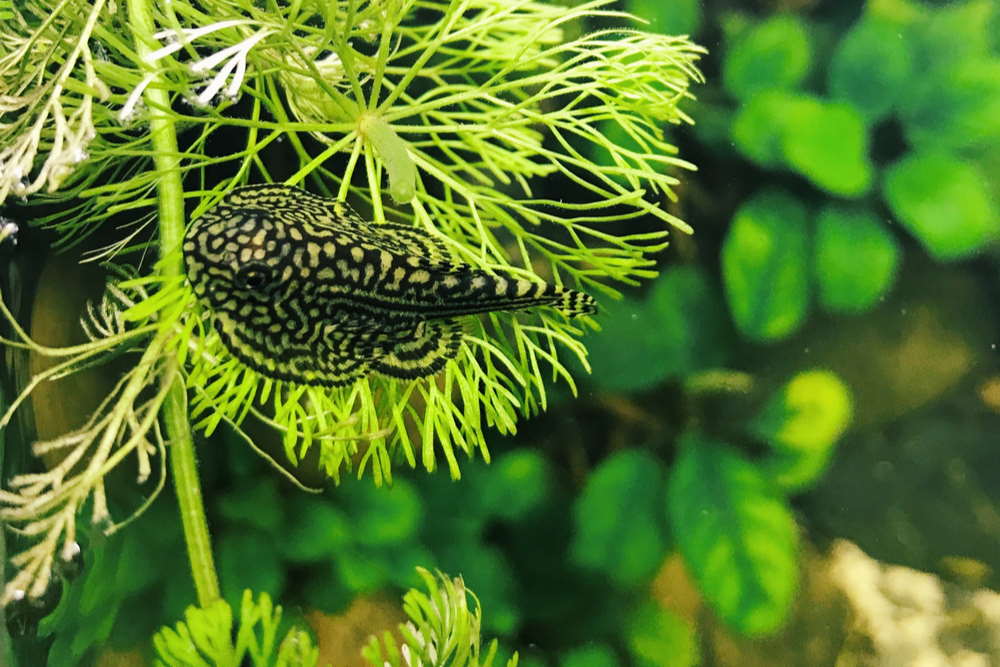
There are many species of hillstream and brook loaches, such as Sewellia lineolata, Beaufortia kweichowensis, and Gastromyzon ctenocephalus.
2. Amano Shrimp
While hillstream loaches are great at consuming flat types of algae, you may also need a more nimble-fingered algae eater that can reach into narrow gaps or tear off chunks of fuzzy algae. Meet Caridina multidentata, a clear-brown dwarf shrimp that can reach 2 inches (5 cm) in length. They are one of the rare animals that will eat black beard algae and hair algae, but only if you don’t feed them too much. Given their small size, you’ll need a group of at least four of them (or even more) to make a significant dent in the algae growth. For more details on their care requirements, read the full species profile here.
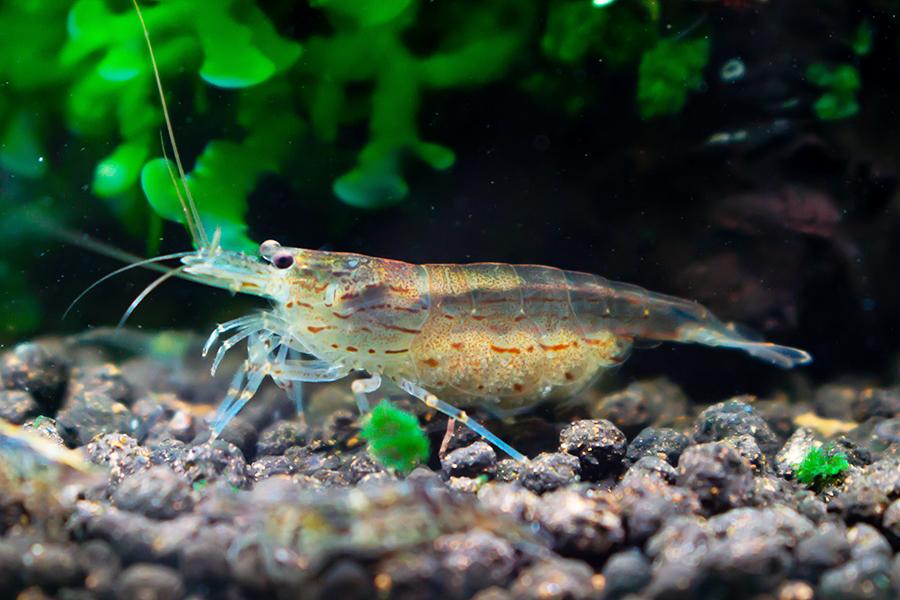
Amano shrimp will readily breed in your aquarium, but you won’t get any baby shrimp unless they are raised in saltwater.
3. Nerite Snails
Coming from the Neritidae family, we have a very diverse group of small, ornamental snails that are adept at both scavenging and eating algae. They’re especially handy at scraping off the very tough green spot algae and other algae found on plants, driftwood, and decor. Unlike most other types of aquarium snails, their white, sesame seed-like eggs will not hatch in fresh water, so you don’t have to worry about an out-of-control population boom. While there are many beautiful varieties to choose from (e.g., tiger, zebra, horned, and red racer), we personally like olive nerite snails because they seem to be the hardiest. Just don’t forget to provide extra calcium in the water (using crushed coral or Wonder Shell) and in their diet (using nano food blocks) to help with healthy shell development.
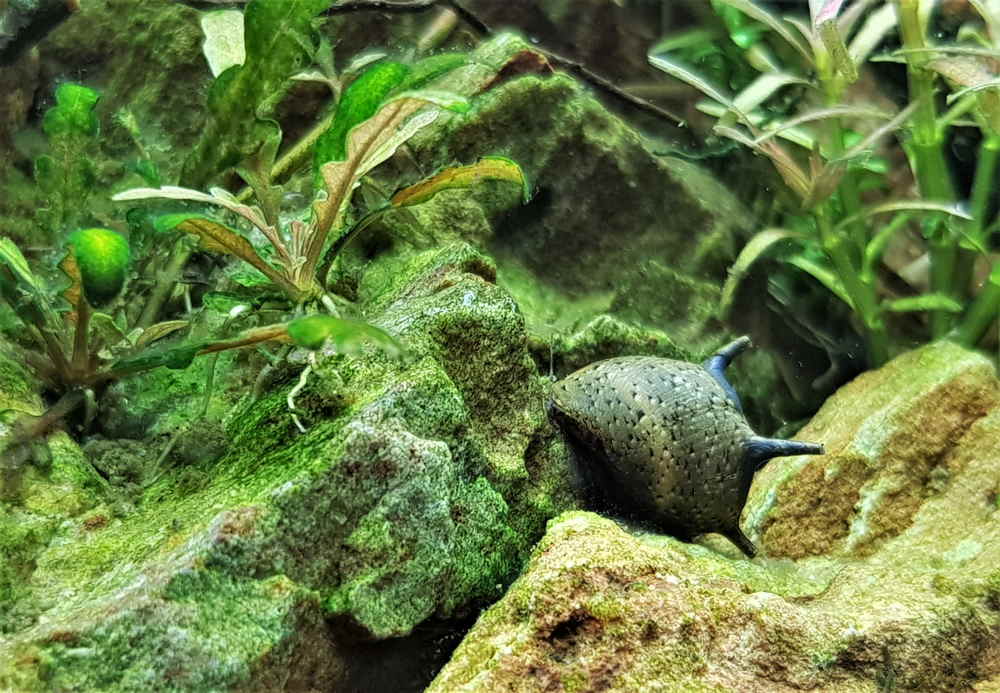
Green spot algae is very difficult to remove from rocks and plants, but nerite snails are one of the few animals capable of removing and eating it.
4. Cherry Shrimp
If you did a direct, head-to-head comparison, a single cherry shrimp (or Neocaridina davidi) isn’t as efficient at algae eating as an amano shrimp. However, these brightly colored dwarf shrimp breed easily in home aquariums, and with a decent-sized colony, they provide excellent preventative maintenance against the buildup of excess food and algae. Their tiny limbs are perfect for picking through the substrate, plant roots, and other tiny crevices, and they’re happy to consume anything that’s digestible. At 1.5 inches (4 cm) long, cherry shrimp come in almost every color of the rainbow and can be easily sold for profit to your local fish store or other hobbyists. Read more about them in our cherry shrimp article.
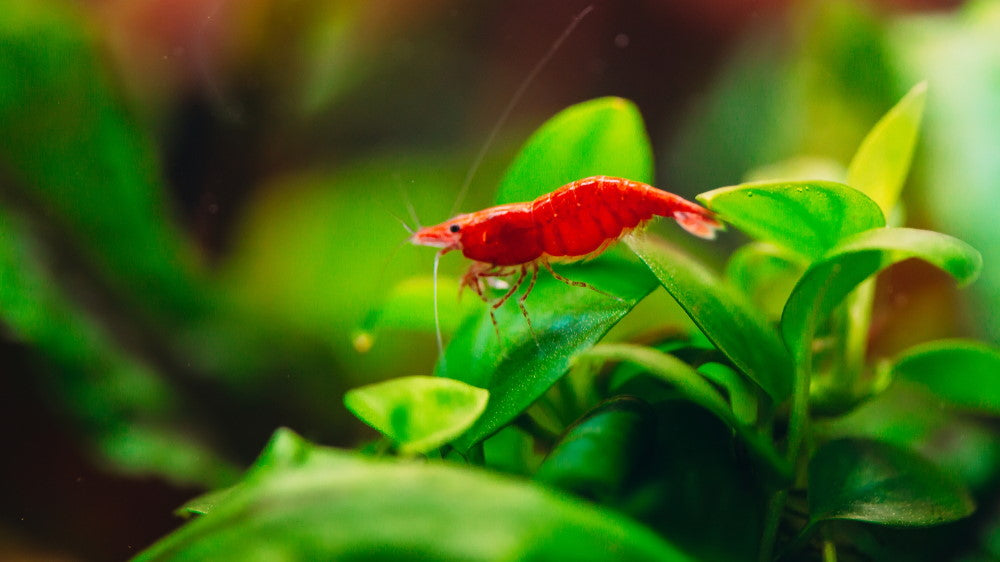
An army of bright red cherry shrimp exploring a lush forest of green aquarium plants is a delightful sight to behold.
5. Otocinclus Catfish
The catfish of the Otocinclus genus are commonly known as otos or dwarf suckermouths because they typically stay around 2 inches (5 cm) in length. Their smaller, slender bodies allow them to fit into tighter spaces than other algae-eating fish. Like the hillstream loach, their mouths are ideal for eating diatom algae from flat surfaces, and you can find them usually hanging out on the aquarium glass or plant leaves. Otos are prone to being underfed, so make sure you give them plenty of Repashy Soilent Green and vegetables like canned green beans and blanched zucchini slices. For more information on how to care for these adorable catfish, read our full article here.
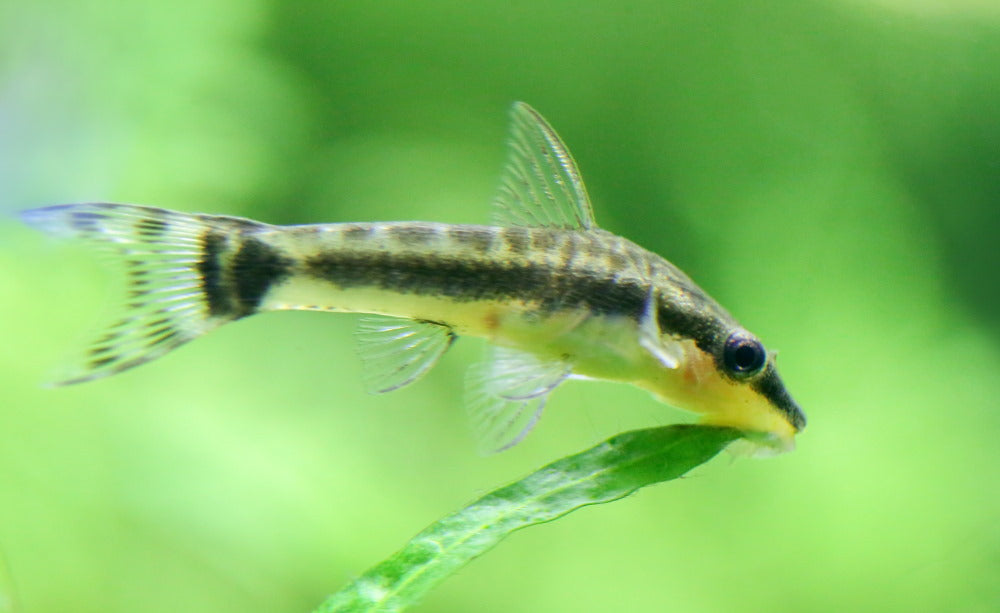
Otocinclus catfish are a schooling fish, so try to get at least three to six of the same species to help these shy creatures feel safe and comfortable.
6. Siamese Algae Eater
Crossocheilus oblongus (also known as SAE for short) is a 6-inch (15 cm) cleaner fish that is commonly used in larger aquariums. Their downturned mouths are well-suited for eating hair algae, black beard algae, and leftover scraps in the fish tank. SAEs are known to tend to eat more algae as juveniles because the adults are big enough to get the lion’s share of feedings in the aquarium. Therefore, you may need to reduce food portion sizes in order to get older SAEs interested in eating algae again. As with hillstream loaches, SAEs can be a little territorial with their own or similar-looking species, so choose to either get one individual or at least three in a group for more algae-eating power.

Siamese algae eaters are not the same as Chinese algae eaters, which are much more aggressive and can get twice as big.
7. Florida Flagfish
Jordanella floridae is also known as the American flagfish because of the male’s beautiful red stripes and rectangular shoulder patch that resembles the flag of the United States. This 2.5-inch (6 cm) voracious algae eater has the perfect mouth for ripping out hair algae, black beard algae, and other fuzzy algae types, but it can sometimes damage more delicate plant leaves in the process. If you have an unheated tank with other fast-swimming tank mates, this killifish may be the right algae eater for you.

As a native of North America, flagfish can thrive in cooler water environments without any aquarium heaters.
8. Bristlenose Plecostomus
Plecostomus are one of the most well-known algae eaters, but they often get very large as adults and aren’t suitable for the average home aquarium. Thankfully, bristlenose plecos from the Ancistrus genus are peaceful catfish that stay between 4 to 5 inches (less than 13 cm), making them perfect for a 25-gallon tank or larger. Their suckermouths are made for devouring algae, vacuuming up food crumbs, and keeping driftwood clean. However, remember to feed them a well-rounded diet of sinking wafers, frozen bloodworms, and Repashy gel food to make sure they get all the necessary nutrients.
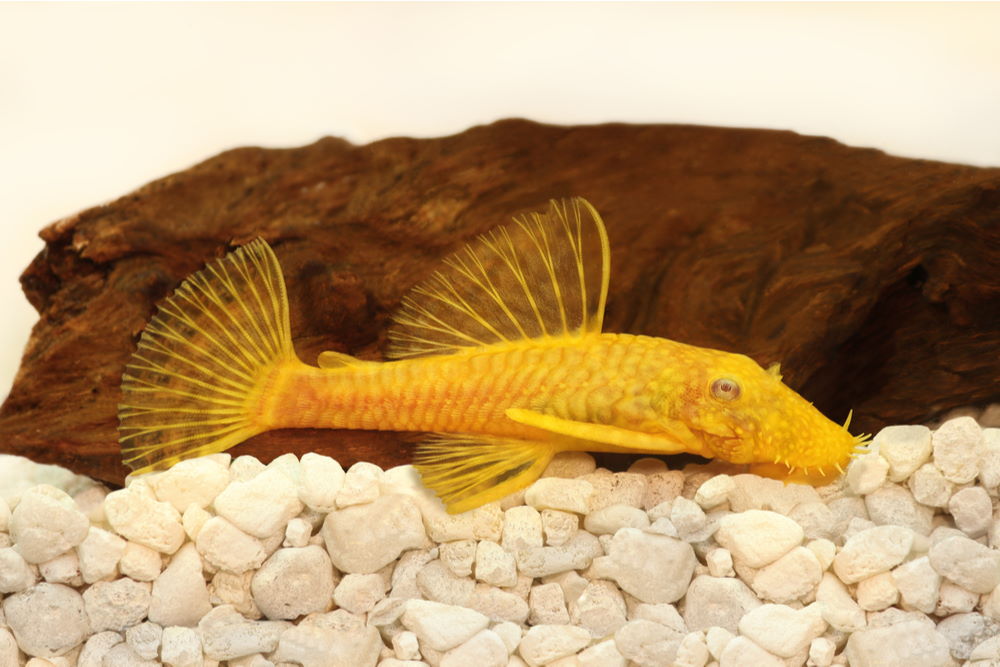
Males are known for the bristles on their snout, whereas females have a more clean-shaven face.
9. Molly Fish
Mollies are popular livebearers from the Poecilia genus that live in fully fresh to fully salt water in the Americas. Because of their flat, grasping jaws and bottomless stomachs, they are constantly picking at algae found on plants, hardscape, and even flat surfaces. The aquarium hobby has selectively bred them into a wide range of colors, patterns, fin types, and body shapes, and they readily reproduce if given plenty of food and hiding spots for the fry. As a heads up, fancy mollies are often raised in brackish water fish farms, so if you sense health problems with your new fish, consider adding aquarium salt and extra minerals to help them thrive.
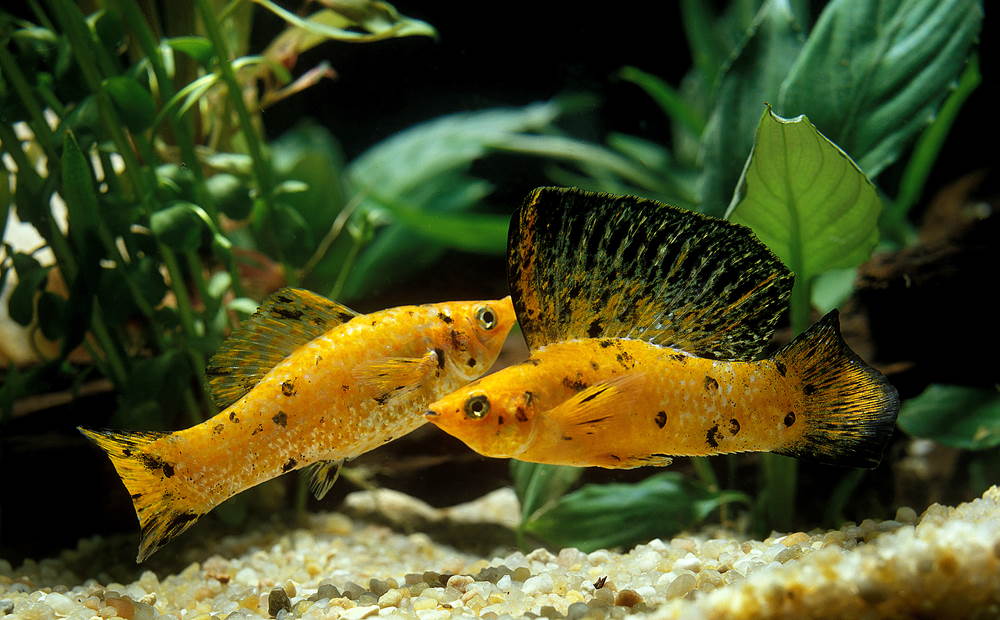
Different types of mollies can range in size from the 2-inch (5 cm) balloon molly to the almost 6-inch (15 cm) sailfin molly.
10. Rosy Barb
Certain barbs such as the rosy barb (Pethia conchonius) have a taste for fuzzy algae like hair, staghorn, and thread algae. This relatively peaceful species grows to 3 inches (7.6 cm) long and comes in normal, neon, and long-finned varieties. Similar to the flagfish, rosy barbs can be kept in unheated aquariums with other speedy tank mates. To lessen any aggression, make sure to keep them in groups of at least 6 to 10 (ideally with more females than males) in a 29-gallon tank or larger.
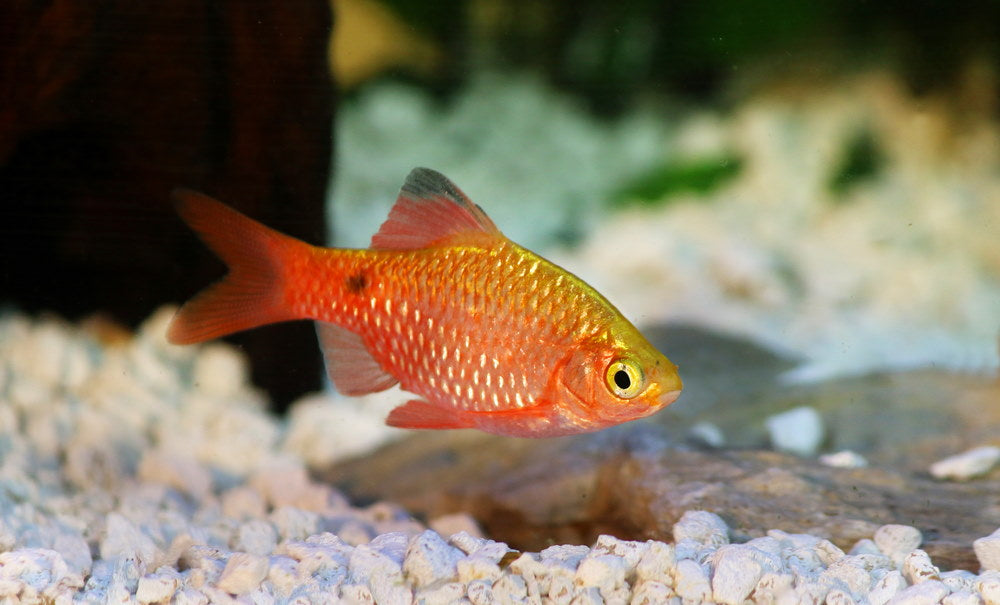
Unlike most barbs, Pethia conchonius are relatively peaceful and won’t bother your other fish as long as you get a decent-sized school to keep them entertained.
Need more tips on getting algae under control? Read our complete article on the most common types of algae found in freshwater aquariums and how to get rid of them.




